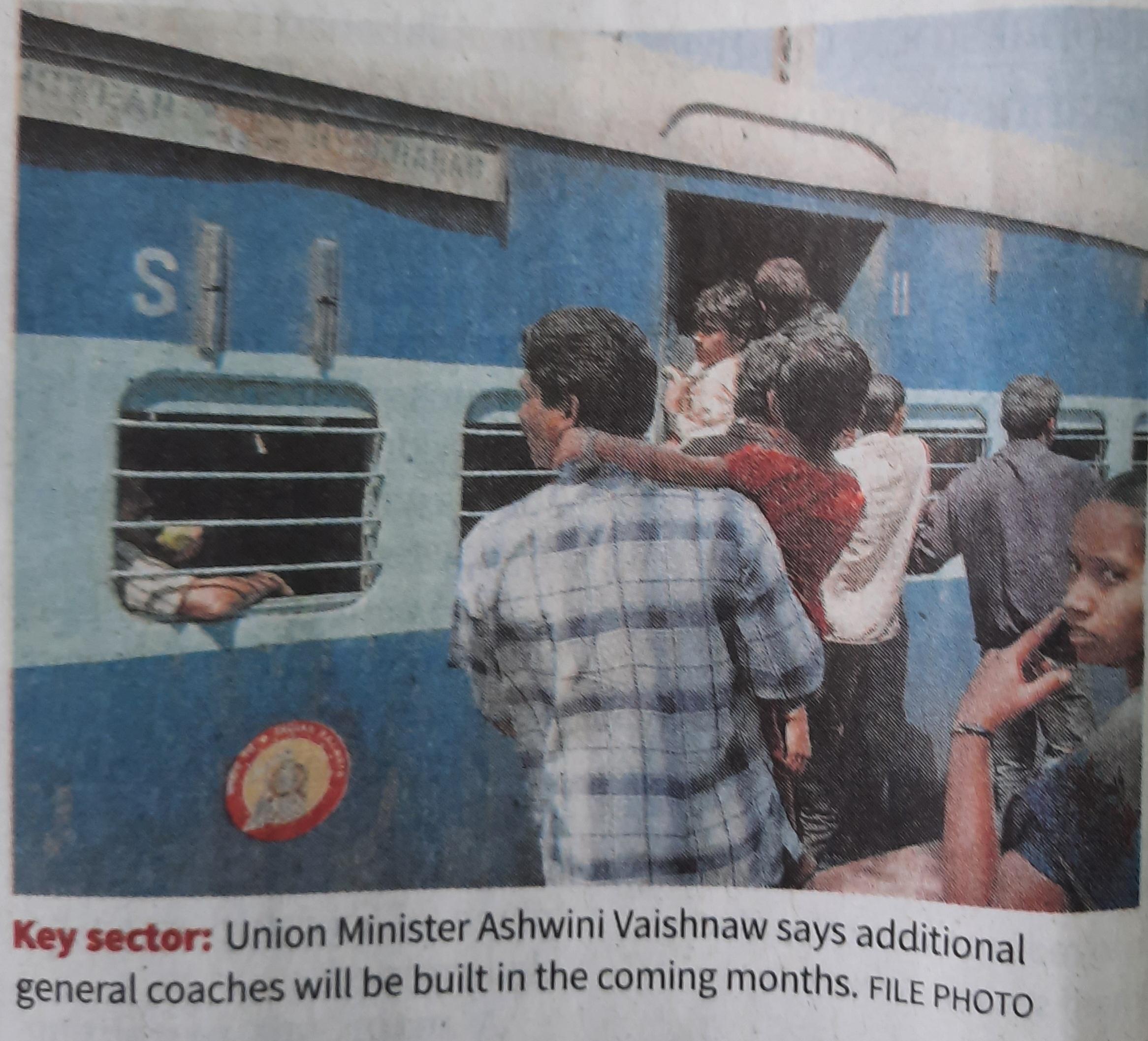Increasing Rail Coaches for the Bottom 60% people of India’s Wealth Distribution:
The Honorable Railway Minister has announced through the press that additional general coaches will soon be added to trains. This is a welcome move, addressing a long-standing need expressed within the community. Thank you, Sir, for this decision, which will greatly benefit the lower-middle-class and economically weaker sections that make up more than the bottom 50% of our population.
Indian Railways, a crucial national transporter, has long been the lifeline of the country, significantly impacting our economy. The integration of new technologies like "Ultrasonic Flaw Detection" and the sophisticated "Kavach" signaling system highlights the continuous improvement in our rail network.
The Indian Railways, one of the world's largest networks, operates 13,523 passenger trains and 9,146 freight trains daily, spanning 67,000 km and carrying 23 million passengers daily (8.395 billion annually). A significant percentage of these passengers belong to the lower 50% and lower-middle-class segments of the population, making rail travel an essential mode of transport for them.
For the affluent, rail travel is an economical alternative to airfares or personal car usage. However, for the economically disadvantaged, rail travel is a necessity, especially for commuting to work, visiting home during festivals, school holidays, and pilgrimage trips. They cannot afford private car travel on their modest earnings.
The Railway Minister mentioned that the ratio of non-A/C coaches, including sleeper coaches, to A/C coaches is currently 2:1. While there is a demand for new premium trains and more A/C coaches, which is positive for improving the working ratio and preventing losses, it is essential to balance this with the needs of ordinary rail travelers.
To better serve the 23 million daily passengers, many of whom cannot afford A/C fares or high-class trains, the ratio between non-A/C ordinary class coaches and A/C coaches should be adjusted to at least 2.5:1. This will ensure that the bottom 50% and lower-middle-class travelers have more affordable and comfortable travel options. more













